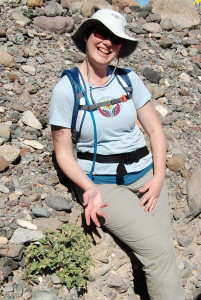[masterslider alias=”ms-100-1-1-1″]
All photos provided by Jennifer Ackerfield
The hottest place on Earth, Death Valley, isn’t your typical botany hotbed. But heavy rain this year has brought forth a rare, fleeting “super bloom” – a colorful burst of millions of wildflowers, as far as the eye can see.

Wild-for-wildflowers botanist Jennifer Ackerfield, assistant curator of the Colorado State University Herbarium who’s also a graduate student, wasn’t about to miss out. She put out a call on Facebook. Who’s with me?
A total of six botanist friends, many of them recent CSU alumni, flew or drive from all over the U.S. to join her. Together they spent a weekend in Death Valley National Park, heads down (typical of botanists), botanizing the super bloom.
“Botany brings people together,” said Ackerfield, flipping through photo after photo of yellow, pink and green blooms teeming from the desert floor. “All the people who came had a shared passion for flowers and identification of flowers.”
During their wildflower-counting adventure, Ackerfield and friends met up with fellow botanists from the California Native Plant Society. Together, the scientists will work up a catalogue of the more than 30 species they saw, and submit it to SEINet (Southwest Environmental Network), an Arizona State University-based image library that’s widely used by botanists and enthusiasts.
During the trip, Ackerfield managed to get her picture with a plant from her favorite genus, Mentzelia. Taxonomically challenging, Menzelias, or stickleafs, open at night and are thus inconspicuous, and they grow in harsh places. “I like it because the whole plant is covered with these huge, multicellular hairs, like velcro,” Ackerfield said.